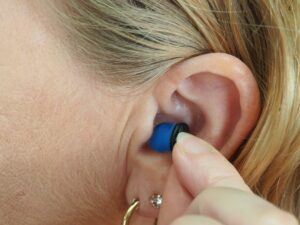
Knowing the contributing factors of heat stress
Knowing the contributing factors of heat stress, or thermal stress, is the first step in managing heat stress, which is a big concern for the workforce.
The first image that comes to mind when you hear the term “heat stress” is undoubtedly a scorching, sunny day in the middle of summer. And while it is true that working in the hot sun can contribute to heat stress, this is by no means the only element we need to take into account.
Although we frequently link heat stress with outdoor employment, if we are aware of all the conditions and contributing factors that can cause it, we won’t be unprepared for it in any workplace.
To begin with, we must classify heat stress. There are many different illnesses that fall under the umbrella of “heat stress.” Their degree of seriousness ranges from mildly uncomfortable to fatal. They include heat rash, heat exhaustion, heat cramps, and heat stroke.
Read More: How to manage the risk of heat stress
Every process or location that could cause the body’s deep core temperature to rise above 39 degrees Celsius increases the likelihood that a worker will develop heat stress-related illnesses. These occupations range from but are not limited to working in kitchens and non-air-conditioned warehouses to metal smelters and outdoor construction. The majority of workers may experience heat stress at some point in their employment, and that is not an exaggeration.
The main categories of variables that affect how susceptible someone is to heat stress are personal risk factors, job-related factors and environmental factors. Environmental elements are frequently the only ones that are taken into account. After all, when you spend the day working in the heat, it’s more difficult to ignore the potential of heat stroke. However personal risk factors and job-related ones are frequently overlooked, and the consequences can be fatal.
These main categories’ variables that should be considered have been summarized as follows:
Personal Heat Stress Contributing Factors
Medication
Some medications can affect the body’s ability to tolerate (and effectively deal with) thermal stress. Workers taking medication for the following conditions should be particularly vigilant:
- Colds, allergies, and congestion
- Blood pressure
- Diarrhoea
- Urine production (diuretics)
- Psychosis
- Depression
- Dizziness or vertigo
- Thermogenic fat burners
Health Conditions
- Short-term illnesses, such as diarrhoea, vomiting, or respiratory infections
- Chronic conditions, such as diabetes and heart disease
- Being overweight or obese
- Poor physical fitness
- Over the age of 60
- Prior heat stress illnesses (increases the risk of heat illness in the future)
Alcohol Use
Alcohol has a negative impact on the body’s capacity to regulate temperature, making workers who have used alcohol within the preceding 24 hours more susceptible to heat-related ailments. Dehydration from drinking alcohol can also contribute to the development of heat stress.
Fluid Loss
Workers who sweat more than 1.5 percent of their body weight in a single day are more likely to experience heat stress, however this factor varies greatly from person to person. By providing appropriate fluid intake to counteract fluid loss, this can be fixed.
Read More: How to avoid thermal stress in the workplace
Job-related Contributing Factors to Heat Stress
Activities
- High exertion
- Not enough rest breaks
- Repeated strenuous days in the heat
- High motivation to push through discomfort from heat strain.
Acclimatization
To help the body adjust to the heat, new hires and people who have spent some time away from the heat should return gradually. When there is a sudden shift in temperature at the worksite, such as during heat waves or when there is mining nearby, workers who are already acclimated may be more susceptible to heat stress.
Clothing and PPE
Some PPE is cumbersome and unable to breathe, which makes it easy for the body to become overheated. Workers should pay specific attention to coated and non-woven materials that are frequently used in protective clothing because they stop sweat from evaporating. In general, the heavier the garment, the longer it takes longer for evaporation to adequately cool the skin.
Work Schedule
The danger of acquiring heat illness increases significantly for those who perform demanding tasks during the hottest times of the day. Change work schedules where possible so that demanding tasks are completed early in the morning and late in the afternoon instead of in the middle of the day. By doing this, exposure to intense heat will be reduced.
Environmental Factors That Contribute to Heat Stress
- High temperatures, especially with high humidity, which makes sweating less effective.
- Direct sun exposure.
- Lack of wind or breeze to cool the body; however, when ambient conditions are higher than body temperature, warm airflow can actually increase heat gain.
- Proximity to engines or other hot equipment.
In conclusion, it’s crucial to be aware of the signs of heat stress if you operate in a workplace where it’s a possibility. Early detection of heat stress can practically save lives. Thus, keep a look out for these symptoms:
- Headaches
- Nausea
- Dizziness
- Cool, clammy skin
- Pale face
- Cramps
- Weakness
- Excessive sweating
If the contributing factors of heat stress mentioned above are present, move the person to a cooler location, give them a drink, and let them rest. The most serious heat-related sickness is heat stroke, which if ignored can have serious and even fatal side effects. Signs of heat stroke include:
- Headache
- Nausea
- Flushed face
- Hot, dry skin
- Lack of sweating
- Body temperature of 101 degrees or higher
- Chills
- Rapid pulse
If a worker exhibits signs of heat stroke, they should seek medical attention at once. Call for help, move the person to a cool area, and wrap them in a cool sheet. If you think heat stress may become a problem in your workplace, arrange thermal stress risk assessments from Apex Environmental.








